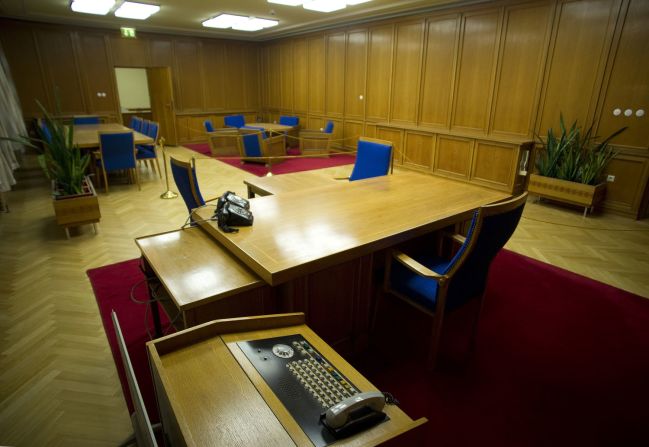
Home, sweet home —
Welcome to the world of "Ossi" football. This is Berliner FC Dynamo's Sportforum stadium in Hohensch?nhausen, deep in the east of the city. The district is famous for its Stasi jail. The club is also known as BFC Dynamo. 
Just like the old days —
The interior of BFC's club headquarters hasn't changed much since the fall of communism.

Glittering past —
BFC manager J?rn Lenz, 46, a former midfielder for the club, stands next to photos of the team's past successes. BFC won East Germany's Oberliga for 10 successive years between 1979 and 1988.

Loyal servant —
Bernd Brillat, 64, who played for BFC between 1966 and 1983, is pictured in the club's stadium. Today, he's the team's kit manager and still plays football.

The good life —
Former BFC defender Waldemar Ksienzyk said playing for the club "was a high point of my football career because we had a very good team and comradeship. It was a good life."

On the road —
The Trabant was produced in East Germany from 1957 to 1990 -- but some footballers in the country at that time were paid enough to be able to afford more luxurious modes of travel.

Wheels of fortune —
BFC players earned enough to afford a Russian-made Lada car, considered a luxury at the time.

Extraordinary history —
BFC was seen as being "owned" by the Stasi -- East Germany's secret police. Its biggest fan was Erich Mielke, the Minister for State Security for more than 30 years until the German Democratic Republic (GDR) collapsed in 1989.

'My Boys' —
As well as being a keen BFC supporter, Stasi chief Mielke (center) was the club's honorary chairman and would refer to the players as "My Boys." Mielke is pictured standing behind German athlete Helga Haase, the first female Olympic speed skating champion, at a reception party.

Seat of power —
Mielke's office remains at the defunct Stasi headquarters in Berlin, which is now a museum. Because of BFC's Stasi connections, the club became synonymous with "referee manipulation."

Stasi command centre —
The former Stasi headquarters in East Berlin. "It emerged after the political transition that Dynamo, as the favorite club of Stasi chief Erich Mielke, received many benefits and in some cases mild pressure was applied in its favor," the German FA (DFB) says on its website.

Watching brief —
A visitor looks at a display of video monitors once used by GDR border police. Former player Falko Gotz recalls that on BFC European away trips "there were Stasi officers there that didn't just accompany us as fans. When you're on the fourth floor of a hotel and there are two people sitting in front of the stairs all night, you know it's definitely not fans."

A tale of two cities —
It's 1968, and Berlin's Brandenburg Gate is seen through a swirl of barbed wire. BFC came to represent football power in the east of the divided city.

Fall of the Wall —
On November 11, 1989, thousands of young East Berliners gather at the Berlin Wall near the Brandenburg Gate as they wait for a crossing into the West to be opened. The fall of East Germany meant the end of life as BFC had known it.

Coming through —
East German border guards demolish a section of the Berlin wall in order to open a new crossing point between East and West Berlin at the border line near the Potsdamer Square on November 11, 1989. Mielke was arrested and the Stasi disintegrated as furious protestors stormed its offices across the country. BFC's days as a powerhouse club were over.

When East meets West —
People from East Germany greet citizens of West Germany at the Brandenburg Gate in Berlin on December 22, 1989 as the border was opened. Bundesliga clubs rapidly lured away BFC's best players.

Making a point —
BFC player Andis Shala gives instructions during a match against FSV Zwickau in 2014. The club is currently in the fourth tier of German football.

True colors —
Fans of the modern-day BFC Dynamo fly a huge flag at a Regionalliga Nordost match against FSV Zwickau in 2014.